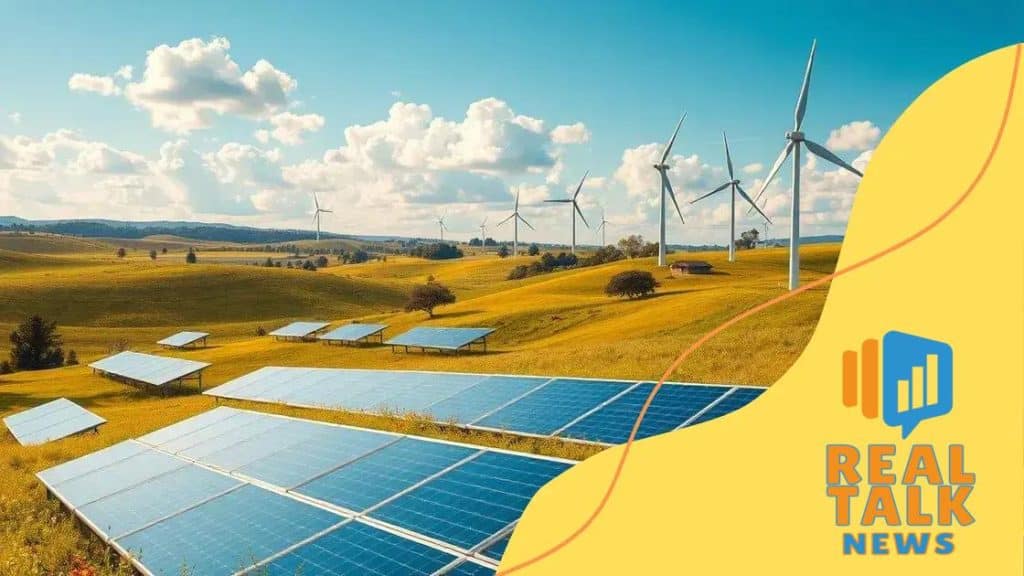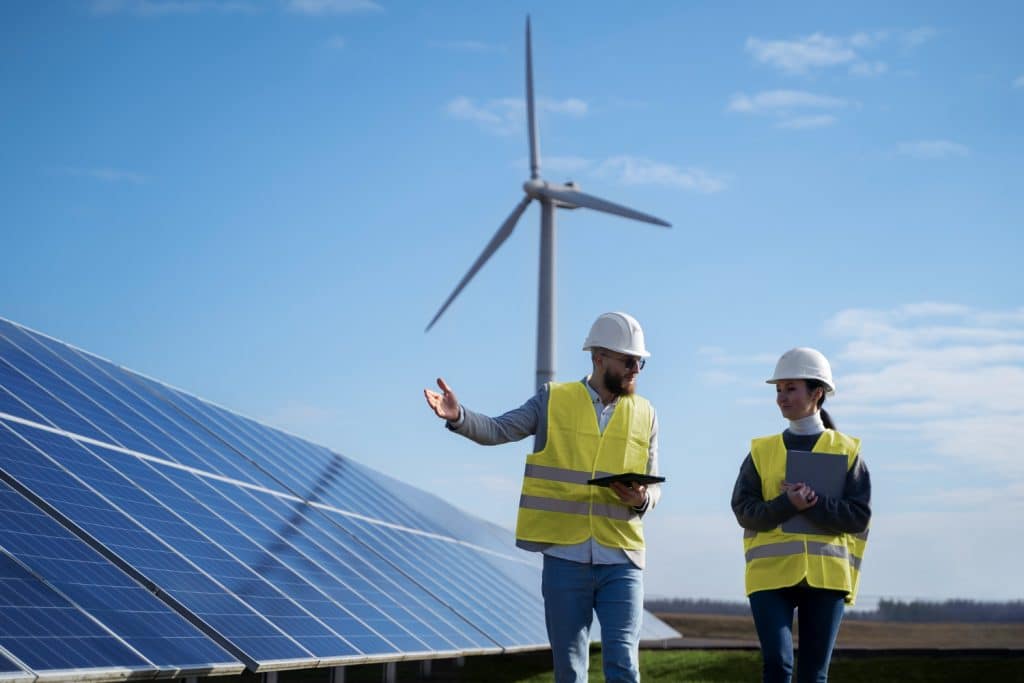What the Elimination of Green Energy Tax Credits Means for Clean Energy, Jobs, and the Future of the Planet

The elimination of green energy tax credits is sending shockwaves through the renewable sector. With incentives on the chopping block, investors and developers alike are left reevaluating their next move.
What happens when key financial drivers disappear? The clean energy movement now faces tougher questions about funding, innovation, and long-term sustainability.
As tax incentives vanish, the spotlight shifts to grants, subsidies, and community-driven models. Could these tools fill the gap, or will progress stall?
Impact on renewable energy investments
The elimination of green energy tax credits marks a significant shift for renewable energy investments.
These incentives have long served as a financial backbone for solar, wind, and other clean technologies, making them more accessible and appealing to both corporations and households.
Without them, many ongoing and planned projects may become less economically viable, especially in regions where upfront costs remain high.
Investors who once relied on tax benefits to reduce risk and improve returns may now hesitate to fund renewable ventures.
This slowdown could stall the expansion of clean infrastructure at a time when the world is trying to accelerate the transition away from fossil fuels.
As capital becomes more selective, only the most competitive and efficient projects may survive, potentially widening the gap between well-funded developers and smaller players in the green energy space.
Strategies for Adaptation
With tax incentives disappearing, companies and policymakers must pivot toward more resilient financing models.
One of the most effective ways to adapt is by diversifying funding sources, such as leveraging green bonds, private equity, and public-private partnerships, to replace the financial cushion once provided by tax credits.
Governments may also shift focus to direct subsidies and grant programs that offer more targeted support without relying on the tax system.
Another crucial adaptation strategy lies in embracing technological advancements.
Companies that invest in cutting-edge energy storage, grid integration, and smart systems can achieve better efficiency and cost-effectiveness, making their projects more attractive even without tax relief.
Collaboration between private companies, municipalities, and academic institutions can also drive innovation, helping the sector remain competitive in a more challenging financial landscape.
Market Responses
The elimination of green energy tax credits will undoubtedly cause ripples across the investment market. While some stakeholders may pull back, fearing lower returns and increased risk, others may view this moment as an opportunity to reset and innovate.
A more mature market may emerge, one that prioritizes sustainability, long-term profitability, and independence from volatile policy incentives.
In the face of this transition, we may also see increased interest in ESG-focused portfolios that emphasize climate resilience. Investors could begin to value companies not just for tax advantages, but for their ability to deliver measurable environmental impact.
This could lead to a healthier, more future-proof energy market, if adaptation efforts are swift and strategic.
Potential economic consequences of the tax credit elimination

The elimination of green energy tax credits is poised to inflict sweeping economic repercussions.
According to recent forecasts, Texas alone could lose up to 77 gigawatts of new electricity capacity over the next decade, enough to power more than 19 million homes, if these incentives vanish.
On a national scale, renewable energy installations are projected to decline significantly, with an estimated 17 % drop for solar and 20 % for wind, putting $263 billion in renewable projects and $110 billion in manufacturing investments at risk.
These figures underscore the fragile balance between policy support and clean energy proliferation.
Job Market Shifts
The workforce connected to green technologies faces steep threats as well. One analysis estimates the loss of nearly 94,000 clean energy jobs in Texas by 2035.
Broadening the lens, independent models predict a net decline of up to 97,000 clean energy jobs across 31 states.
The consequences ripple through local economies, construction, manufacturing, and maintenance roles tied to solar, wind, and battery systems could vanish almost overnight.
One industry insider from the solar sector remarked that “prices go up 30 % at a minimum,” warning that such a hike could have “a drastically negative effect” on customer demand.
The specter of mass layoffs and regional economic instability looms, especially in areas where clean energy was a key employer.
Investment Climate
Investor sentiment is already shifting in response to this policy reversal. While some renewables firms are suspending projects, others see cracks opening for innovation.
According to Business Insider, many climate tech startups are being forced to dismantle operations, climate funding plunged 50 % in Q1 2025, with some opting to relocate abroad to Europe and other more supportive regions.
Nonetheless, a subset of larger domestic manufacturers, such as First Solar, may benefit from new restrictions targeting foreign competitors, potentially boosting their market share.
Despite this, analysts caution that the overall landscape is becoming more uncertain, with heightened risk for projects that once relied on predictable tax support.
Alternatives to green energy tax credits
As the elimination of green energy tax credits takes hold, the conversation is rapidly shifting toward viable policy replacements that can sustain the momentum of renewable energy growth.
These credits have long been instrumental in reducing the upfront financial burden for developers and consumers alike. Their removal creates a gap that must be filled with innovative, responsive strategies if clean energy adoption is to continue at scale.
Exploring effective alternatives is not just a policy necessity, it’s a global priority tied directly to decarbonization goals and climate resilience.
Direct Subsidies
One of the most prominent alternatives being discussed is the use of direct subsidies. Unlike tax credits, which only benefit recipients during the tax season or after project completion, subsidies offer immediate financial backing during development phases.
This shift in timing is critical, especially for small- to medium-sized developers who often lack the liquidity to wait months for fiscal benefits.
By delivering upfront support, direct subsidies can accelerate project timelines, reduce capital risk, and attract a broader range of investors.
Moreover, this model enables governments to direct funding toward specific technologies or geographic regions, creating a more tailored and equitable approach to clean energy expansion.
In countries like Germany and South Korea, direct subsidies have already proven effective in catalyzing local solar and wind projects.
By coupling these financial mechanisms with regulatory streamlining, governments can foster stronger public-private partnerships and deliver tangible outcomes like job creation and energy security.
As U.S. lawmakers debate new approaches in the wake of tax credit elimination, direct subsidies stand out as a practical tool to keep the energy transition on track.
Grants and Loans
Publicly funded grants and low-interest green loans are also becoming central to the conversation. These instruments can lower the barrier to entry for individuals, cooperatives, and startups that want to participate in the renewable energy economy but lack sufficient capital.
Grants are particularly valuable in rural or underserved communities, where traditional financing is harder to secure.
Loans, when structured properly, can offer repayment terms that align with energy savings, making renewable adoption both affordable and financially sustainable in the long term.
Countries like Canada and the UK have already expanded their grant and loan offerings in anticipation of policy shifts, and similar models are being explored in U.S. states such as California and New York.
These programs not only support residential solar adoption but also help municipalities modernize infrastructure with battery storage, microgrids, and EV charging networks.
By shifting focus from tax relief to capital accessibility, governments can directly influence energy equity and community-level sustainability.
Future of green energy policies
The future of green energy policies is critical for sustainability and combating climate change. As governments reevaluate existing programs, new policies will shape the direction of renewable energy investments.
One clear trend is the increased focus on comprehensive policies beyond tax credits. These might include regulations that encourage energy efficiency and investments in clean technology.
Some emerging policy trends include:
As public awareness about climate change grows, there will likely be more pressure on lawmakers to support these initiatives.
Global Collaborations
Another aspect of the future of green energy policies involves global collaborations. Countries are increasingly recognizing that climate change is a shared challenge.
International agreements, such as the Paris Agreement, will continue to influence national policies.
By sharing resources and research, nations can collectively push for advancements in renewable energy. This collaborative approach can lead to:
- Sharing best practices and technologies across borders;
- Joint investments in major renewable energy projects;
- Unified efforts to meet global carbon reduction targets.
The outcome of these collaborations will depend heavily on political will and community support. Local governments are also stepping up, enacting policies that reflect citizens’ values.
As grassroots movements gain momentum, they can significantly impact legislative actions concerning renewable energy.
Looking ahead, the integration of technology can also influence green energy policies. Innovations in energy storage, smart grids, and electric vehicles are setting the stage for a more dynamic energy landscape.
These advancements will reshape how we produce and consume energy.
In conclusion, the landscape of green energy policies is evolving rapidly. The elimination of tax credits presents challenges, but it also opens doors to innovative alternatives. Public opinion is crucial, as it shapes decisions made by policymakers.
Future policies must focus on sustainability, collaborations, and technology advancements to foster a resilient energy sector. As communities engage with these changes, they can drive significant progress toward a cleaner, greener future.
Together, we can embrace solutions that support both economic growth and environmental responsibility.
Did you like the content? Read more on our website: Impact of education department restructuring.
FAQ – Frequently Asked Questions about Green Energy Policies
What are green energy tax credits?
Green energy tax credits are financial incentives provided by the government to encourage investments in renewable energy sources and projects.
How do tax credits impact renewable energy investments?
Tax credits can significantly reduce the cost of renewable energy projects, making them more attractive for investors and developers.
What alternatives exist to green energy tax credits?
Alternatives include direct subsidies, grants, low-interest loans, and partnerships, which can help maintain renewable energy investments.
Why is public opinion important for green energy policies?
Public opinion shapes political decisions and influences whether policies are enacted or adjusted to support renewable energy initiatives.





